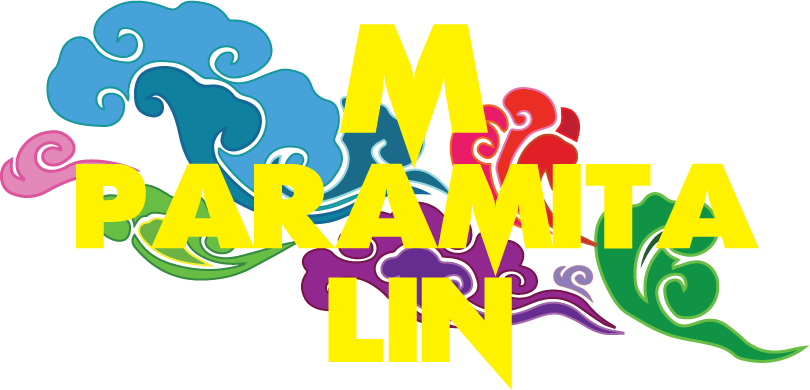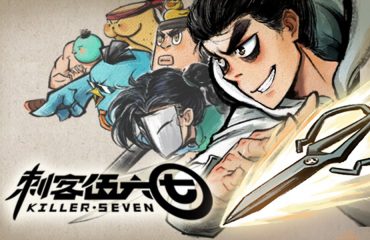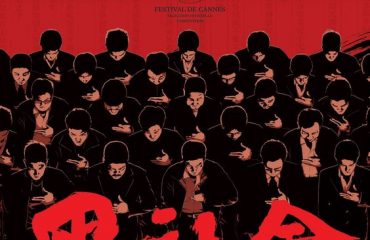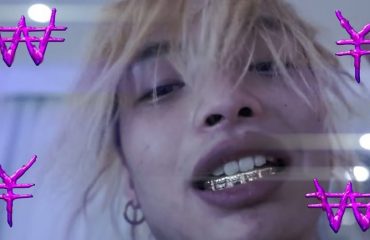Note: This is an addendum to my previous review of Sympathy for Lady Vengeance as part of the Tough Guys, Gangsters, and Delinquents in Asian Pop Culture series. You might want to watch the film before reading the review and this colour analysis as there are spoilers for everything.
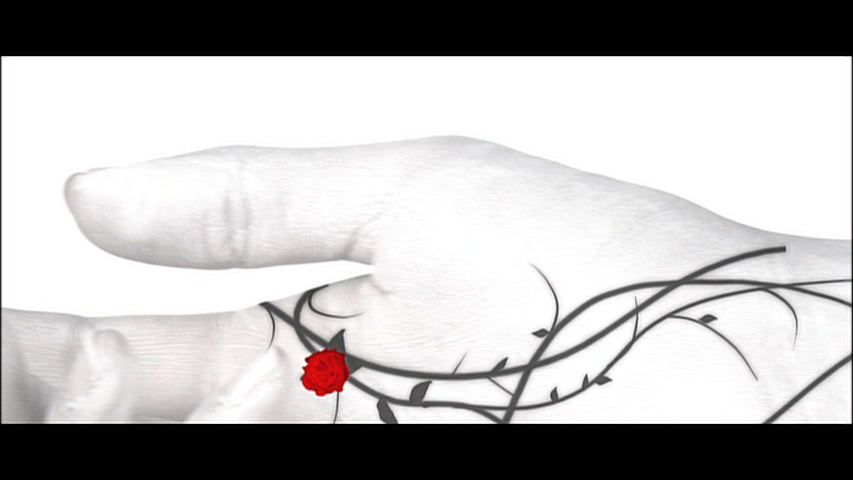
The colour that people associate Sympathy for Lady Vengeance with most is red, which is the focal point of the opening credits and scenes and continues to appear throughout the film in all of its shades, from a rosy pink to a dark shade that looks like dried blood. And blood is obviously one of the main references for this colour, considering that this is a revenge film.
Which kind of makes you wonder what the red of these Santa suits implies. My take is that these poor, naive people see red as a colour of celebration and festivity, not realizing that to Geum-ja, red means something more sinister.

But aside from red, there is another equally important colour that shows up throughout the film: blue. Before we get started on the film, it’s useful to first talk about the concept of yin and yang, which are two opposing yet complementary principles that form one complete whole: female and male, dark and bright, cold and hot, death and life. By the way, I should stress that neither element is “good” or “bad”, they both must exist in balance with each other. If you play Dungeons & Dragons, you know what I mean.
Yin and yang is a theme that may not be explicit in revenge films, but whether unconscious or not, it does drive a lot of them because these films are also about restoring balance, which is what yin and yang symbolize together.
The South Korean flag has a yin and yang symbol on it, with yin (or Korean “eum”) represented by blue, which is the cold, female energy and yang (also “yang” in Korean) represented by red, which is the hot, male energy.
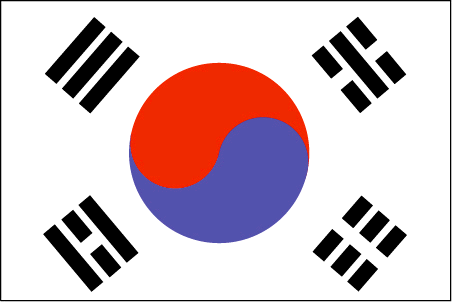
It may be stretching it to say that it’s a callback to the Korean flag, but it’s surely not a coincidence that blue and red are so prominent in Lady Vengeance. I’m going to go for the most obvious reason here, with red representing the passion for revenge and blue representing death. Blue also seems to be the colour for punishment and atonement, considering that the prison uniforms seen in the film are also in blue.
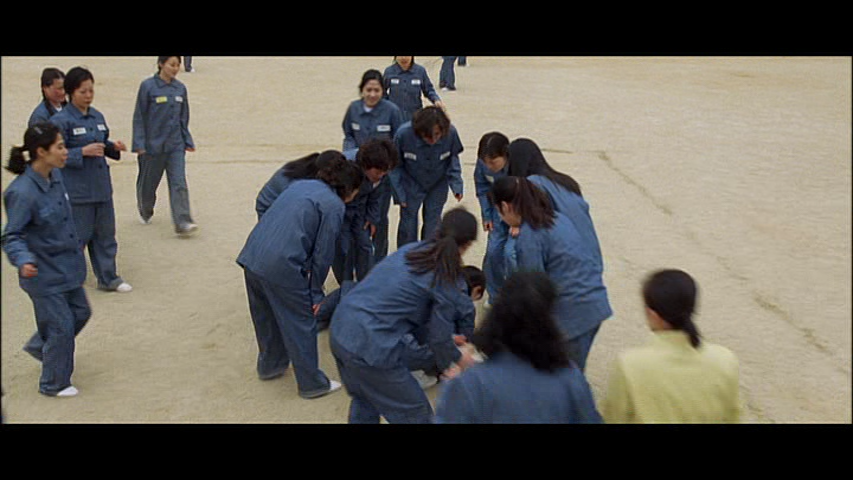
The first time we see Geum-ja is when she leaves prison in the same white dress that she wore going in thirteen years previous. The white colour is the first visual red herring that makes us think of innocence and redemption, but note that there are blue and red dots all over her dress. She’s not as innocent or redeemed as we might expect, as we find out later.
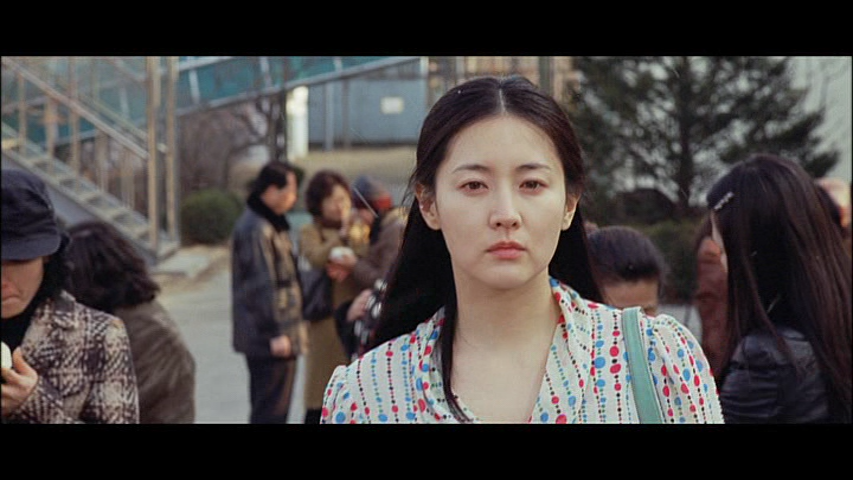
She also wears this dress on her trip to Australia to visit the daughter she’s lost; we are reminded that she was really young and naïve when she was separated from Jenny, but at the same time, not quite innocent and in this situation, not yet redeemed for losing her daughter. You will also see that her clothes don’t really complement or match Jenny’s clothing. There’s no connection here just yet because Jenny hasn’t forgiven her and doesn’t even know her very well.
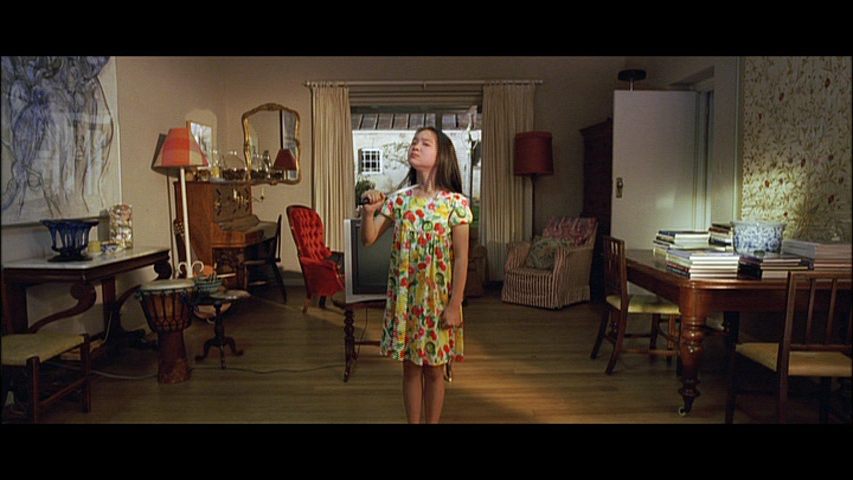
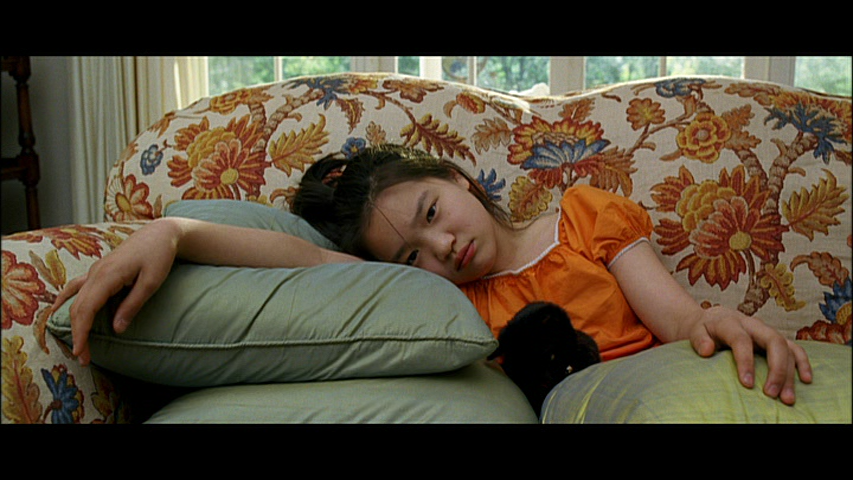
Afterwards, we most often see Geum-ja in red or blue or a combination of both, like her blue coat and red high heels. I’ve mentioned in my previous review that Geum-ja’s story of vengeance is more like a male gang boss’s revenge story rather than a wronged woman story. Geum-ja is never subjected to an exploitative gaze where she’s some kind of passive or sexualized victim. Although in some ways Geum-ja resembles a classic femme fatale (even her hairstyle is a modern interpretation of a 1950s one) who uses her beauty as a weapon, like a male protagonist, she doesn’t really need to seduce a male patsy who’ll do her dirty work for her. She and her crew get their hands dirty themselves, and thus it makes sense that her colours are a combination of male and female, yin and yang, blue and red.
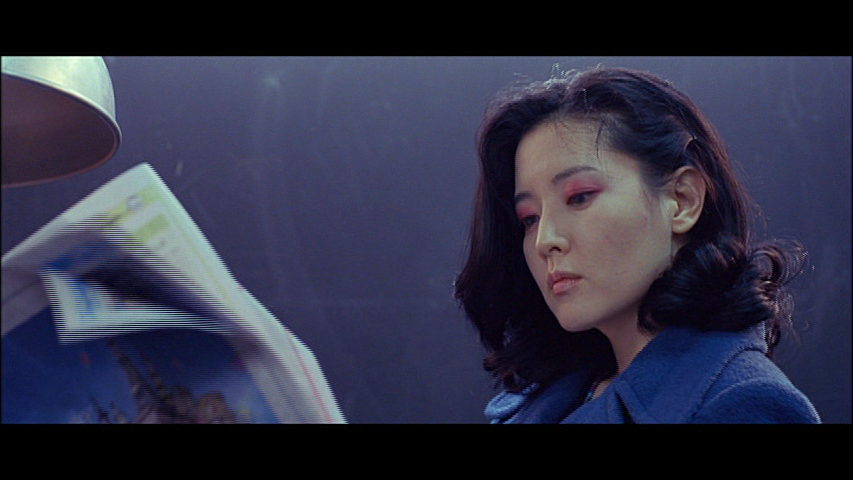

As the aggressor during her sexual encounter with the young and pretty boy at the bakery where she works, the red of her slip here isn’t just a callback to femme fatale-ness, it’s also a reminder that red is the colour of the yang (masculine) energy.
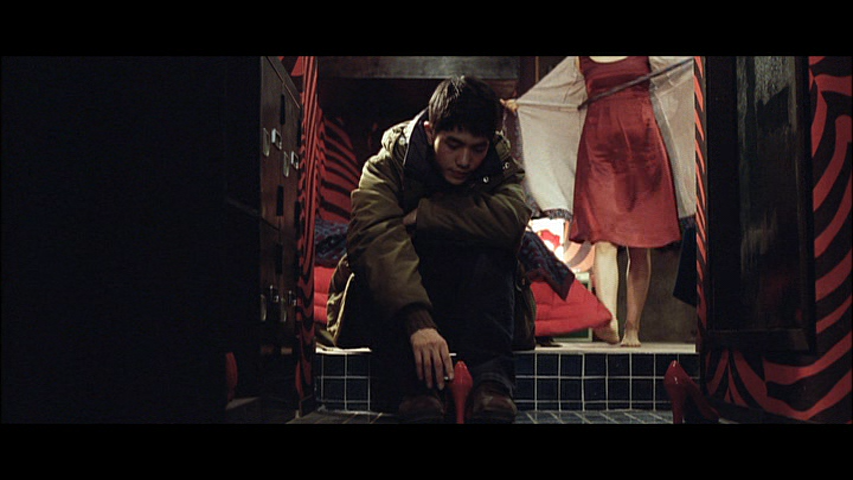
Historically, Koreans didn’t wear red, which signified an abundance of passion and also impropriety. That’s since changed now, obviously, but it’s interesting to see this in context of Geum-ja operating outside of societal rules, especially for women. It’s the same for her ex-convict accomplices, who also wear variations of red.
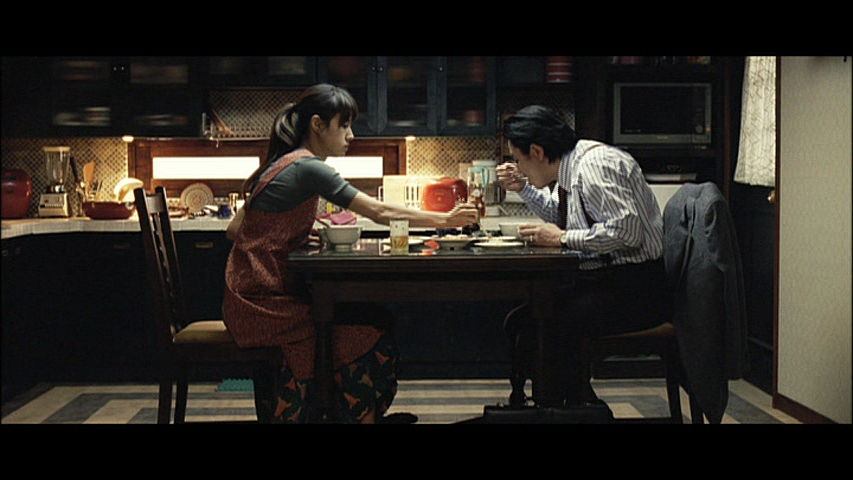
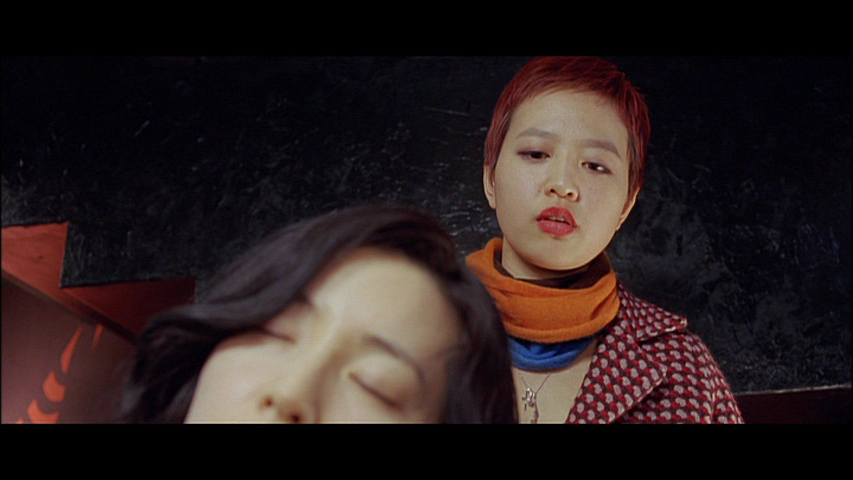
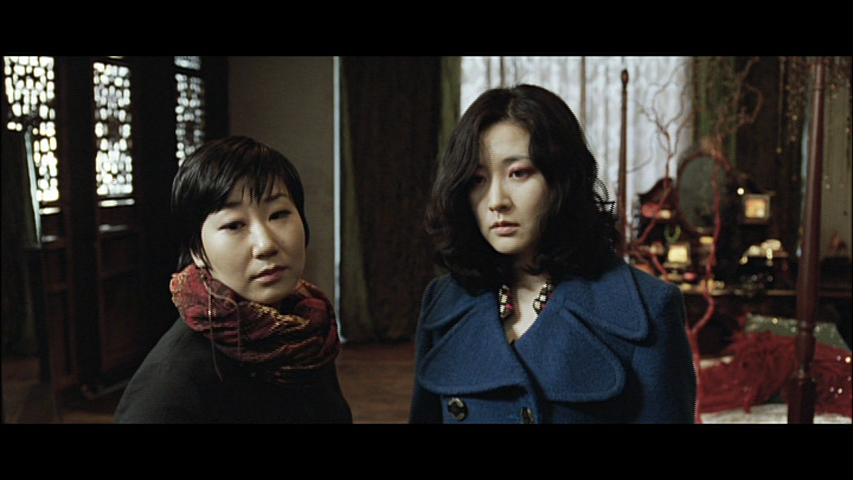
Yes, I’m counting this shade as derivation of red.
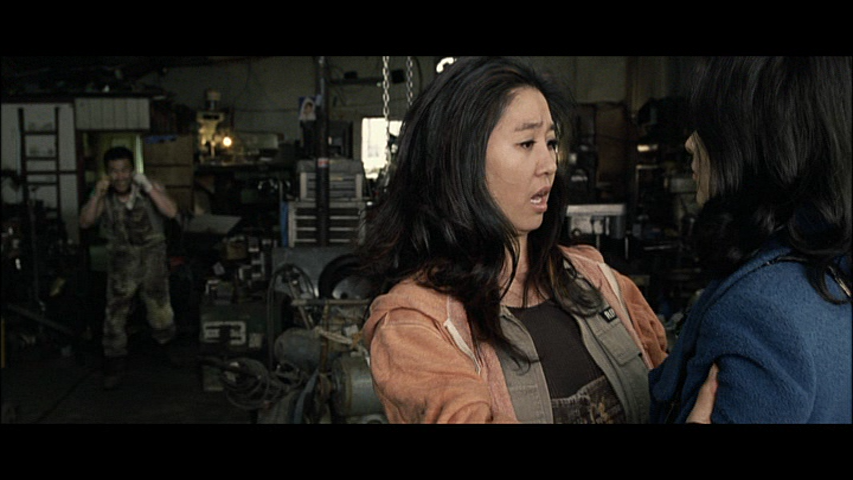
There is a moment where Geum-ja wears white early on in the film, but I think it’s a fake out by Director Park as Geum-ja lights red candles and falls asleep in her chaste-looking dress to dream of murdering Mr. Baek.
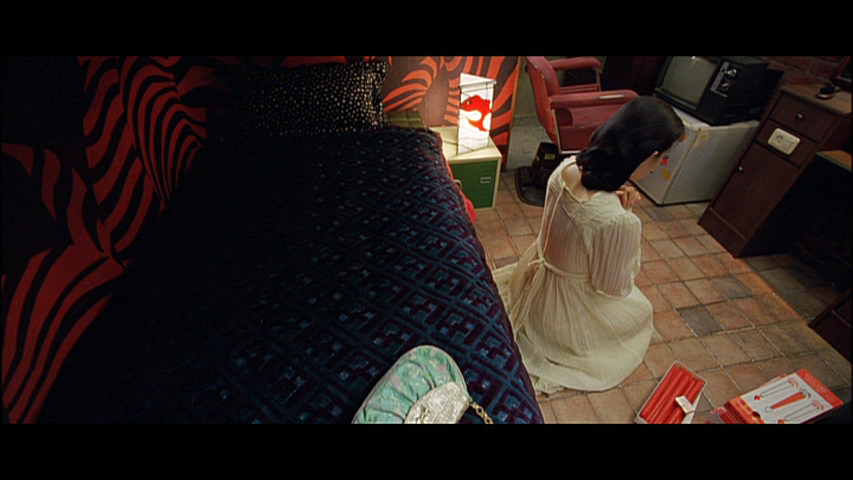
Significantly, Geum-ja wears her blue coat and red heels until she actually commits violent acts. First, the puppy she kills as she does reconnaissance for a place to keep Mr. Baek hostage, and later when she finally enacts her vengeance against Mr. Baek. During those times, she wears a black leather coat with a collar that zips up to her nose, making her look like a superhero and a villain at the same time.

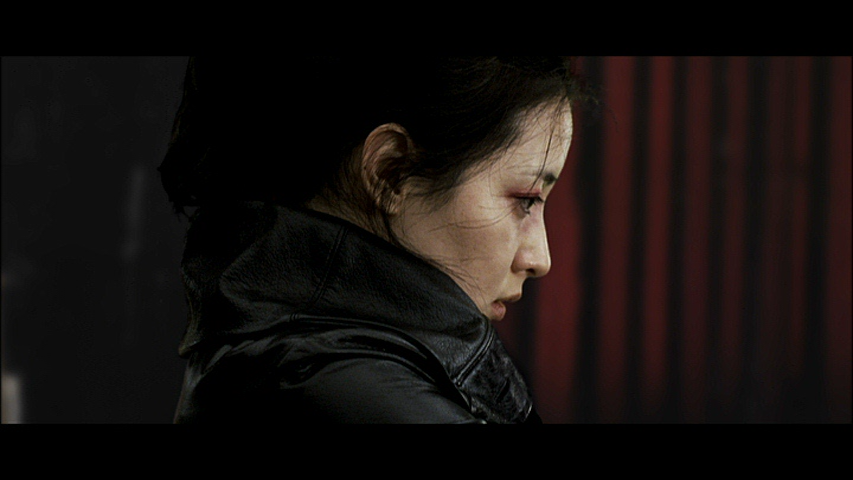
Black leather is obviously associated with gangsters, bringing to mind toughness, violence, and implacability. The only colour we can see on Geum-ja is her red eyeshadow, and it’s only after Mr. Baek is dead that we see Geum-ja remove her eyeshadow, indicating that her drive towards violence is over.
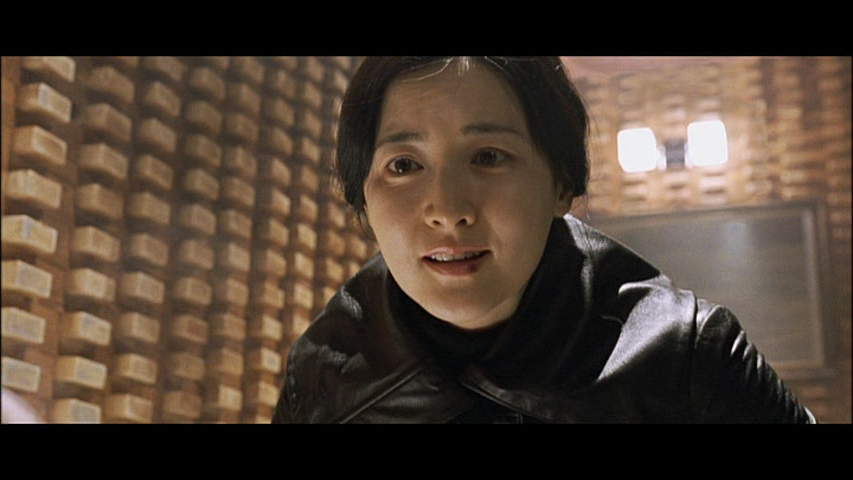
Most of the families who end up killing Mr. Baek also wear black, although with touches of earth colours, which seem to signal mainstream or regular folk.
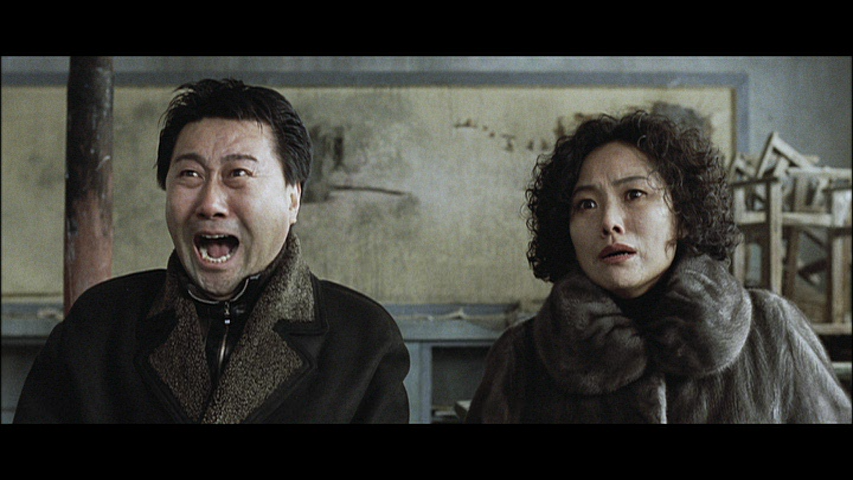
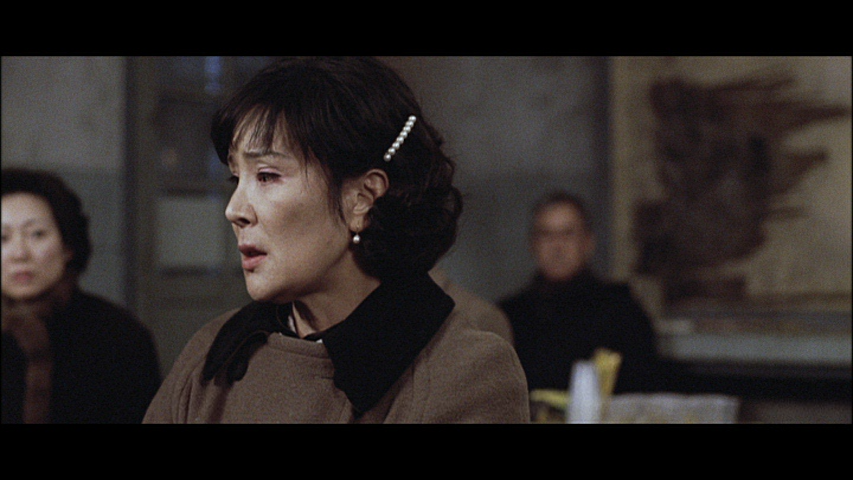
Another example of the earth tones is when Geum-ja goes to the adoption agency to see what’s happened to her daughter, and her drab clothes mimic the social worker’s outfit as she tries to fit in with normal people.
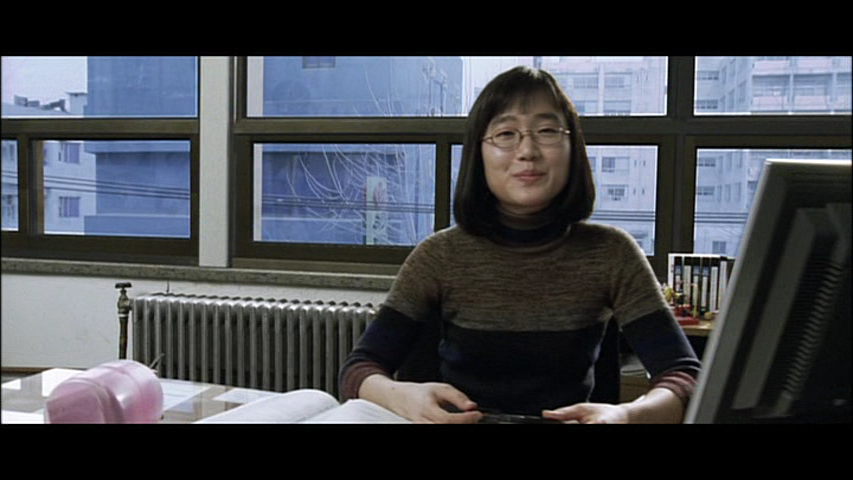
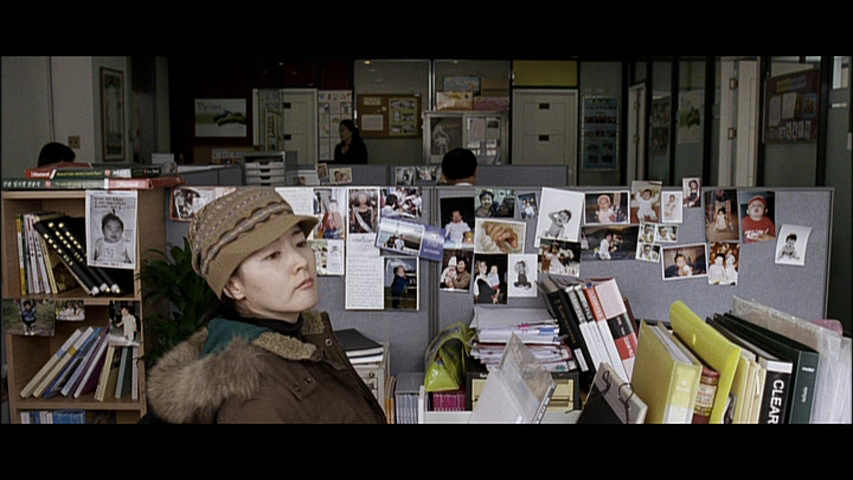
The film also makes use of patterns and prints to signal either innocence or criminality. For example, animal prints are associated with crime and violence: Geum-ja’s apartment is painted in red and black tiger stripes.

The bank robber couple wears snakeskin hose over their faces.

And when Ji-yeong is finally freed of her obligation to pretend to be a meek housewife to Mr. Baek, she does a fashion 180 from her previous demure beige and brown clothes to a trashier, leopard print outfit (I should mention that I have similar clothes so I approve).
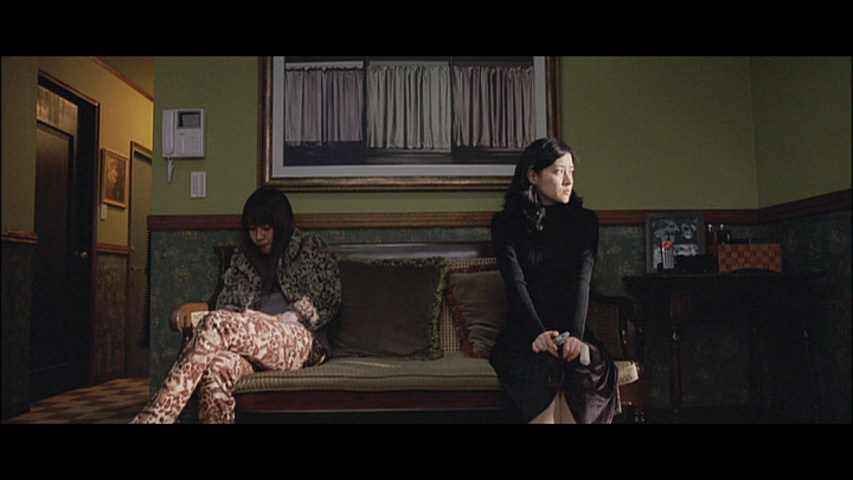
Stripes and plaid, on the other hand, serve to distinguish the innocents in the film, with Won Mo (the murdered child) seen in his striped shirt;
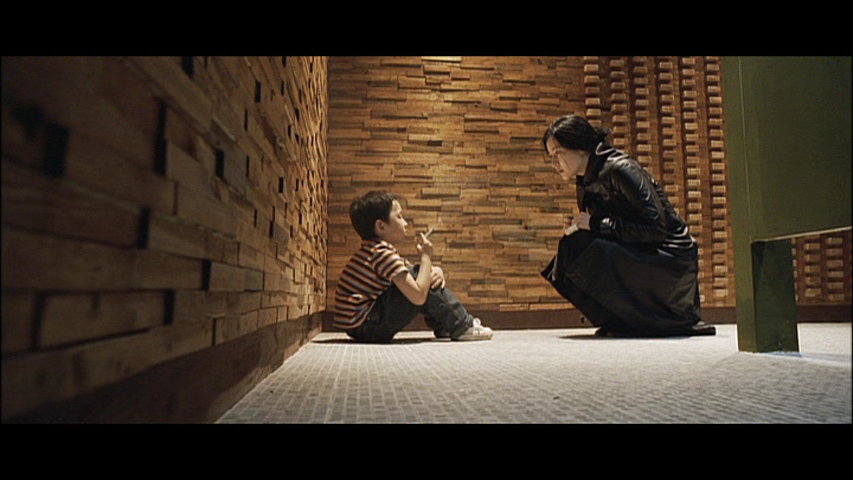
Jenny in her schoolgirl plaid and later on stripes (in this scene out for her own vengeance against her mother, thus the colours), and even Geum-ja’s young lover in his stripes and plaid, connected via colour to Jenny and Geum-ja).
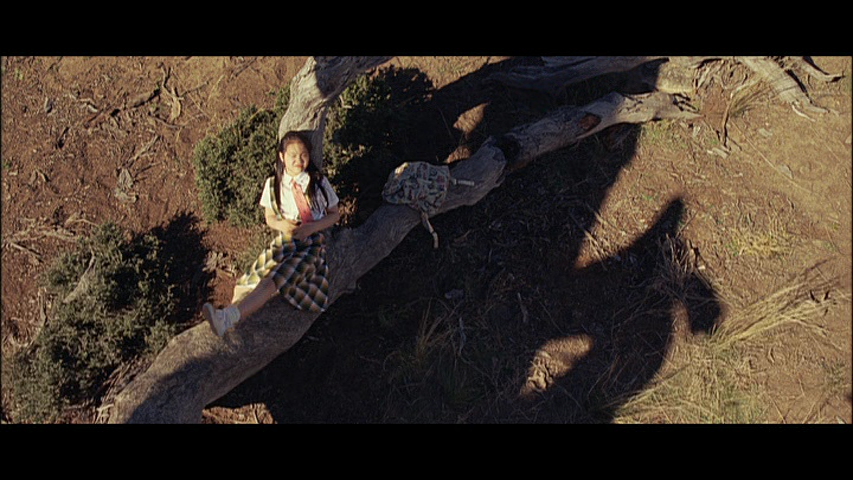
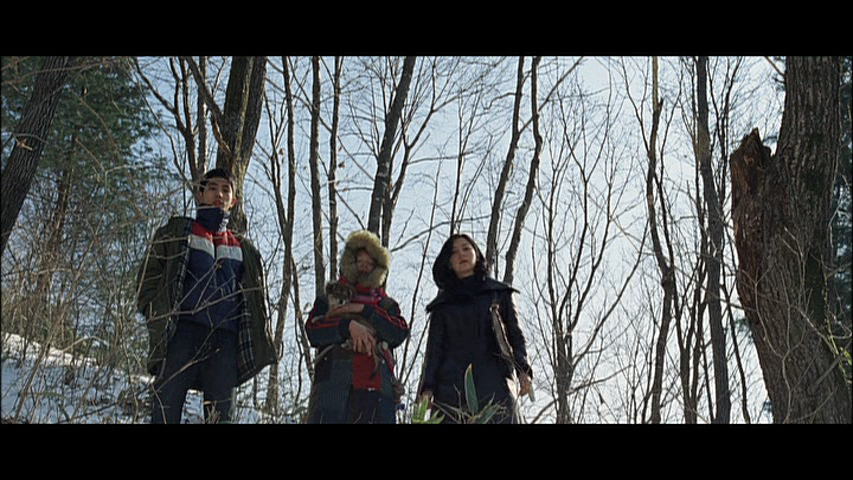
So it’s with a lot of irony that Mr. Baek wears a striped shirt and a blue and red plaid ties with a teddy bear or cute animals in the foreground; he’s pretending to be innocent even though he’s a child murderer.
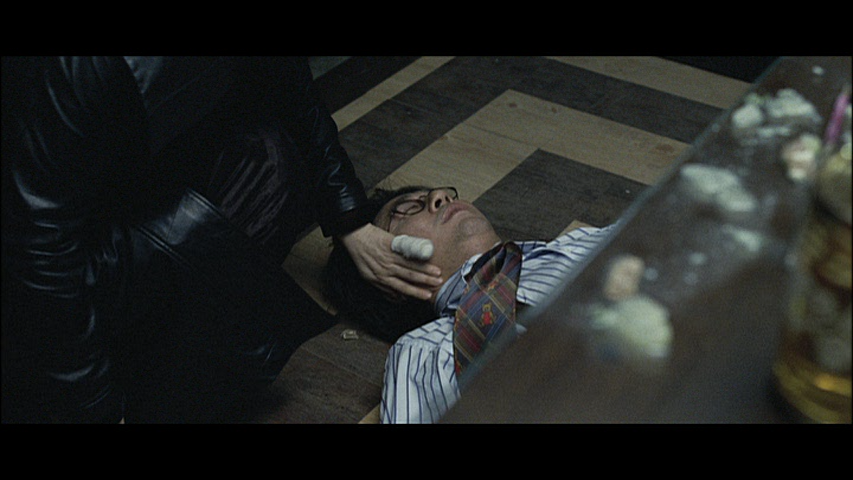
He also wears plaid at home, which makes sense as it’s a pattern the film associates with children and he’s a child murderer.
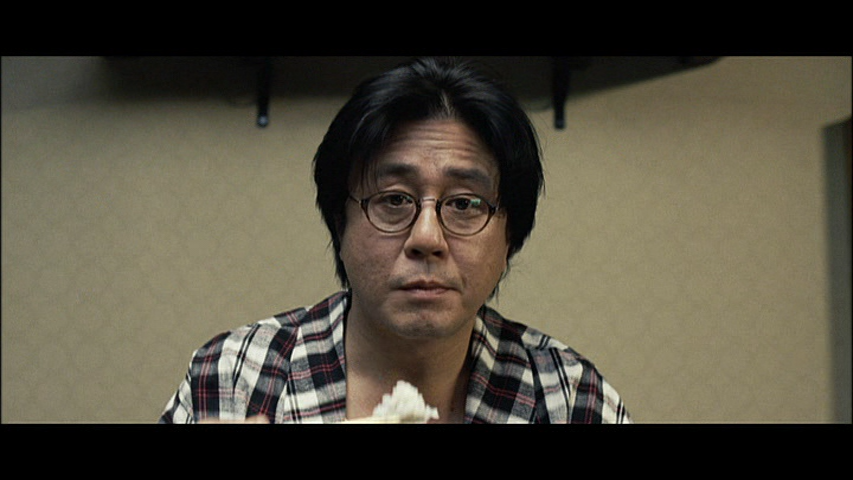
Also, note how the wealthier families of the murdered kids wear expensive-looking coats and gloves, and the father and daughter pair who had to go into debt to afford the ransom are dressed in brighter, cheaper-looking jackets, as if they’re from the countryside. The working class family is also in plaids and reds–I do think it’s a reference to how poor people are portrayed as less educated, thus less emotionally restrained and mature or “civilized”.
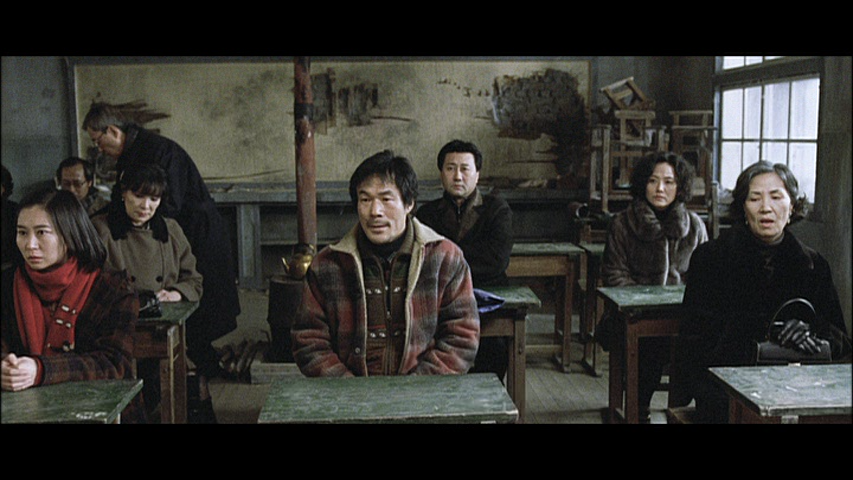
As we near the end of the film, one thing that stands out is how the intense colours of the beginning slowly drain away to a more monochromatic palette. It’s as if all the anger, violence, and rage have finally bled out, leaving behind regret, guilt, and sorrow…and perhaps hope? After all, redemption is represented by the white tofu.
This is the first scene:
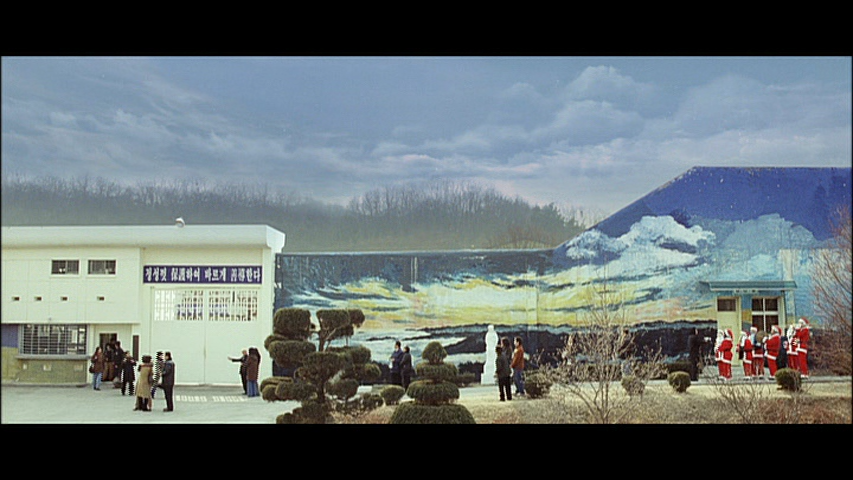
And this is pretty much the final:
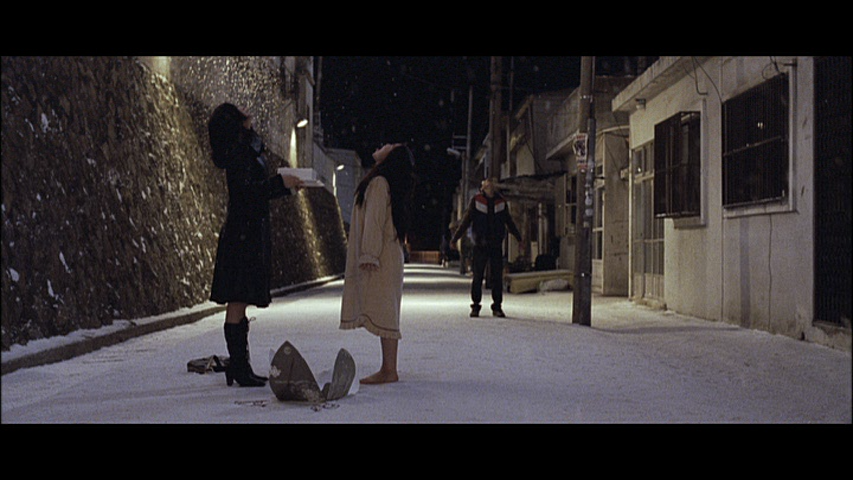
The movie ends with snow falling over Jenny, innocent and fragile in her white nightgown hugging Geum-ja, tough and unredeemed in her black leather coat: opposing yet complementary elements that together make up a whole.
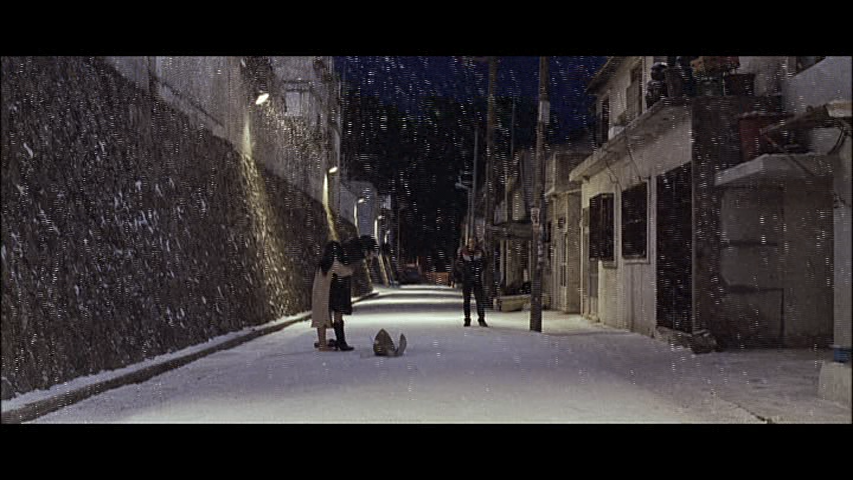
If you liked this post, you might like my fiction too! I am writing a fun neo-wuxia trilogy about an alternate-reality Hong Kong where there are martial arts societies who haven’t modernized and live side-by-side with contemporary Chinese cities. You can sign up for my mailing list to get a preview when it’s done.
I’m also halfway through my Ming dynasty X-Files book, and I’m pretty sure I’ll be done by February 2021. So if you want to get a preview of a jinyiwei (imperial military police) with a kill list teaming up with a pretty-boy aristocrat to track down UFOs, ghosts, monsters, and other supernatural phenomena in your inbox, sign up below too!
